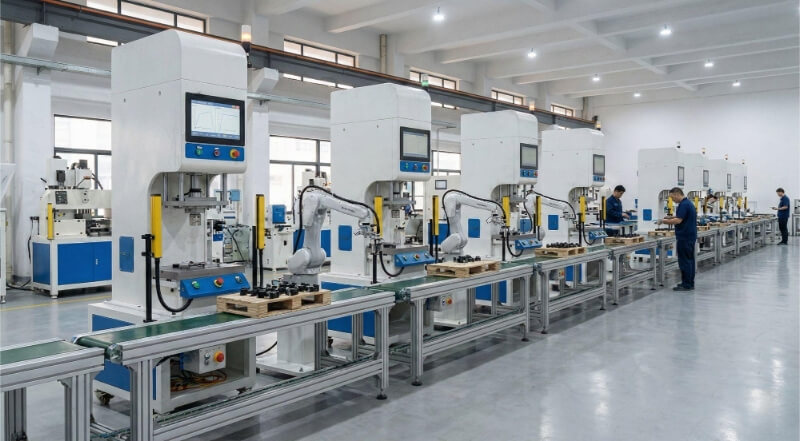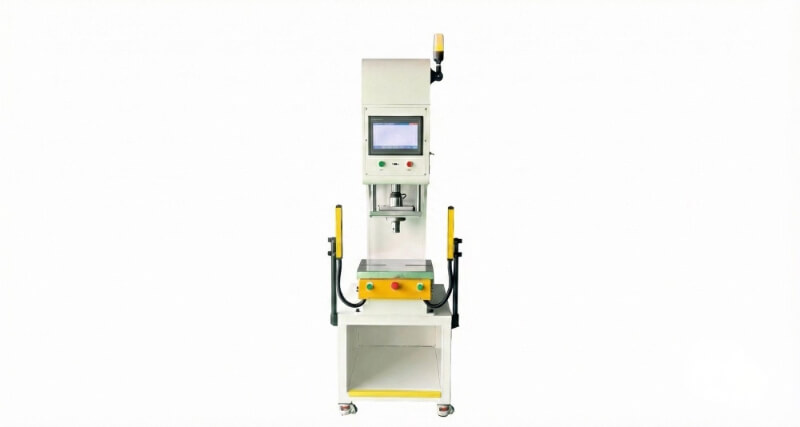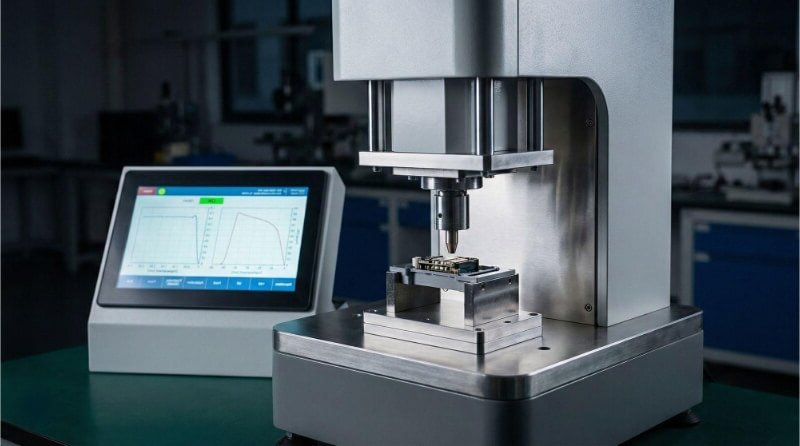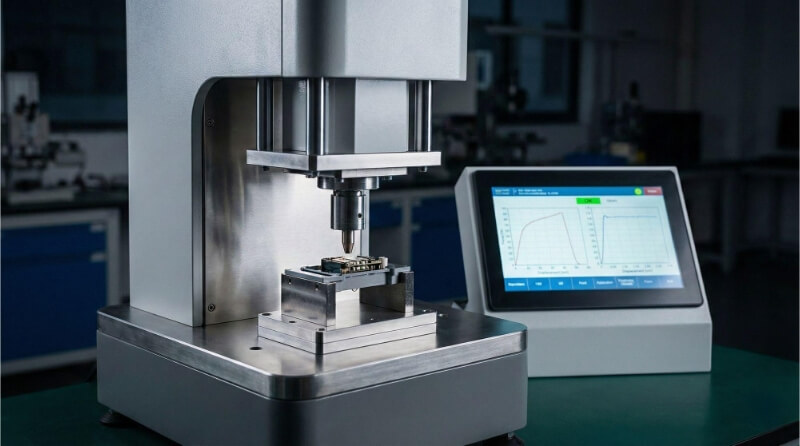多くの企業が同じ課題に直面している。完成品を迅速に納品する必要があるが、自社ですべてを処理する時間、労働者、設備がないことが多い。アウトソーシングはこの問題を解決するのに役立つ。熟練した専門家が製造作業を監督する間、企業は設計、販売、成長に集中することができる。組み立てをアウトソーシングすることで、企業は時間を節約し、コストを削減し、注文ごとに安定した品質を受け取ることができる。
コントラクト・アセンブリーには明確な利点があるが、同時に疑問もある。よりよく理解するために、それがどのように機能し、なぜ重要なのかを検証してみよう。
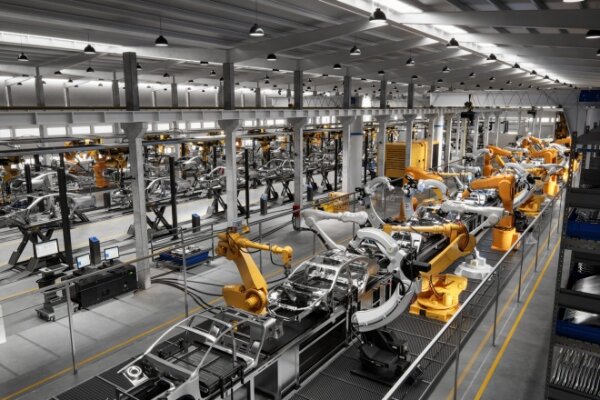
コントラクト・アセンブリーとは?
受託組立とは、外部のパートナーと協力して、部品、サブアセンブリー、完成品を組み立てることである。顧客は部品を供給することも、プロバイダーに調達を依頼することもできる。その後、プロバイダーは与えられた指示に従って製品を組み立てる。この方法によって、企業はコストを抑え、リスクを低減し、本来の業務に集中することができる。
クライアントとプロバイダーの関係
クライアントとプロバイダーには、明確なコミュニケーションと信頼関係が必要です。クライアントは要件、スケジュール、品質基準を設定する。プロバイダーは、これらの指示に従い、一貫した結果を提供することに同意する。双方は、計画、材料の使用、生産工程についてオープンでなければならない。
業務範囲と責任
業務範囲は、プロバイダーが何を行い、顧客が何を提供しなければならないかを説明するものである。多くの場合、材料調達、組み立て工程、テスト、梱包、配送などが含まれる。顧客は正確な仕様、図面、スケジュールを提供する責任がある。プロバイダーは、合意された基準を満たすために組立工程を完了しなければならない。
契約の組み立てプロセス
受託組立工程は、未加工部品を完成品に仕上げる明確な道筋をたどっている。以下は、そのステップの簡単な内訳である。
初期設計およびエンジニアリング・サポート
このプロセスは多くの場合、設計とエンジニアリングのサポートから始まる。プロバイダーは、図面、サンプル、または プロトタイプ.彼らは、製品を作りやすくしたり、コストを下げたり、生産時間を短縮したりするための調整を提案することもある。このステップでは、組み立ての前に、クライアントとプロバイダーが技術的な詳細について合意することを確認する。
部品調達と調達
デザインが確定すると、焦点は素材に移る。クライアントがすべての部品を供給することもある。また、プロバイダーが調達・購入する場合もある。信頼できるサプライヤーは、品質と納期の両方のニーズを満たすために選ばれる。目標は、適切な部品を時間通りに用意することである。
組立ラインのセットアップとワークフロー
材料が配置されると、プロバイダーは組立ラインを準備する。これには、効率的な作業をサポートするためのワークステーション、工具、固定具の設置が含まれる。各作業は混乱を避けるために配置される。わかりやすいワークフローは、スピードを向上させ、無駄を省き、一貫した結果を保証する。
品質管理および試験手順
品質チェックはあらゆる段階で行われる。サプライヤーは入荷部品を検査し、組み立て中の工程を監視し、完成品をテストする。テストには、機械的チェック、適合検査、性能試験などが含まれます。このようなチェックにより、包装前に製品が顧客の基準を満たしていることが確認される。
梱包と最終配送
最後のステップは梱包と配送だ。小売店の棚に並べるか、大量に出荷するかを問わず、プロバイダーはクライアントの要望に応じて製品を梱包する。安全な梱包により、輸送中の商品を保護する。完成した製品は、契約内容に応じて、クライアントに納品されるか、最終顧客に直接出荷される。
組立請負サービスの種類
組み立て請負サービスには、特定のビジネスニーズを満たすためにさまざまな形態があります。ここでは、標準的なサービスをご紹介します。
サブアセンブリ
サブアセンブリーとは、後に大きな製品の一部となる小さなユニットを組み立てることを意味する。事前に部品を準備することで、メーカーの時間短縮に貢献する。このサービスは、自動車、電子機器、機械産業では標準的なものである。
製品組立
製品の組み立てでは、すべての部品を組み合わせて完成品に仕上げます。プロバイダーはクライアントの仕様書に従い、正確さを保証する。このプロセスは、すぐに使える製品を直接顧客に届けたい企業にとって便利です。
メカニカル・アセンブリ
メカニカル・アセンブリは、締結が必要な部品に焦点を当てる、 溶接またはフィッティング。構造的な強度を必要とする金属やプラスチックの部品が使われることが多い。この種のサービスは、機器、電化製品、工業製品によく見られる。
エレクトロメカニカル・アセンブリ
電気機械アセンブリは、電気部品と機械部品の両方を組み合わせたものである。例えば、ワイヤーハーネス、コントロールパネル、電子機器などがある。安全で信頼性の高い電気接続を確保するためには、熟練した労働力が必要である。
梱包サービス
パッケージング・サービスは、出荷、保管、小売のために製品を準備する。クライアントのニーズに応じて、保護包装、カスタム包装、またはブランド包装を使用します。優れたパッケージングはダメージを防ぎ、エンドユーザーの体験を向上させます。
キッティング・サービス
キッティングとは、さまざまな部品をすぐに出荷できるように1つのパッケージにまとめることを意味する。電子商取引、医療用品、製造業などで広く利用されている。すべてのアイテムを1つのキットにまとめることで、企業は処理時間を節約し、ミスを減らすことができます。
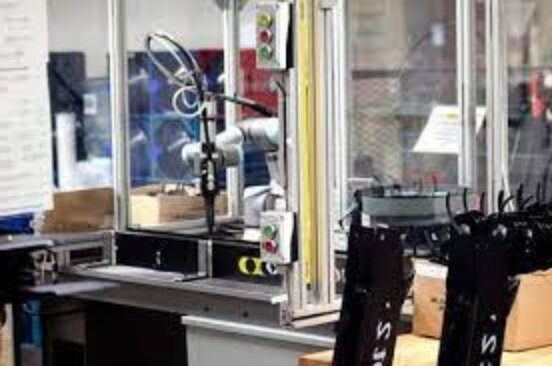
組み立て請負のメリット
受託組立は、企業が真の価値を付加しながら生産を簡素化するのに役立ちます。その利点は時間の節約にとどまりません。さらに、より強力で効率的なオペレーションをサポートします。
コスト削減と効率化
組み立てをアウトソーシングすることで、余分なスタッフ、トレーニング、設備の必要性を減らすことができる。企業は諸経費を削減し、利用したサービスに対してのみ料金を支払う。プロバイダーは無駄を省き、効率を向上させる合理化されたプロセスを実行することが多い。
専門知識へのアクセス
組立請負業者は、熟練したチームと実績のある手法を提供する。彼らは、さまざまな材料、部品、組み立て方法の扱い方を熟知しています。この専門知識により、信頼性の高い結果が得られ、生産中のミスが少なくなります。
拡張性と柔軟性
企業は需要に応じて生産量を増減できる。プロバイダーは、注文サイズに合わせて生産能力を遅滞なく迅速にシフトできる。この柔軟性により、季節的な高騰や市場の急激な変化への対応が容易になります。
市場投入までの時間を短縮
アウトソーシングは生産サイクルをスピードアップする。プロバイダーはすでに訓練された労働者と適切な設備を持っているため、リードタイムを短縮し、企業が製品をより早く顧客に提供することができます。
受託組立の課題とリスク
請負組み立てには多くの利点があるが、企業が管理しなければならない課題もある。これらのリスクを理解することで、遅延や余分なコストを防ぐことができます。
品質保証に関する懸念
生産が社外で行われる場合、一貫した品質を維持するのは難しくなる。業者は指示に従っても、ミスは起こりうる。定期的な検査と監査は、製品が基準を満たしていることを確認する鍵である。
サプライチェーンへの依存
アウトソーシングされた組み立ては、多くの場合、幅広いサプライチェーンに依存している。納品の遅れや材料不足は、生産を遅らせる可能性があります。信頼できるサプライヤーと協力することで、こうしたリスクを軽減することができます。
コミュニケーションと調整の問題
契約の組み立てには、クライアントとプロバイダー間の強力な連携が必要だ。コミュニケーションが不十分だと、仕様、スケジュール、納品にミスが生じる可能性があります。明確な文書化と定期的な更新により、双方の足並みを揃えることができます。
知的財産の保護
設計や技術的な詳細を外部のパートナーと共有することには、それなりのリスクが伴う。企業は、契約、秘密保持契約、安全なデータシステムによって機密情報を保護しなければならない。これらの対策により、悪用の可能性を低くすることができる。
受託組立と受託製造の比較
請負組み立てと 受託製造 は密接な関係にある。どちらも企業が生産業務をアウトソーシングできるようにするものだが、その範囲とサポートのレベルは異なる。
主な共通点
どちらのモデルも、生産工程の一部を外部プロバイダーが管理する。これらのモデルは、オーバーヘッドを削減し、時間を節約し、熟練労働者へのアクセスを提供する。どちらのモデルも、企業はデザイン、販売、成長に集中する一方で、生産業務はパートナーに頼ることができる。
重要な違い
組立請負は、供給された部品や調達した部品を組み立てることを中心とする。プロバイダーは組み立て段階のみを担当する。
一方、受託製造は全工程をカバーする。設計、材料調達、生産、組み立て、さらには出荷まで含まれ、より広範なエンド・ツー・エンドのソリューションとなる。
どちらを選ぶべきか?
すでに部品を持っている企業や、調達の管理を強化したい企業は、受託組立を選択することが多い。
原材料から完成品に至るまで、完全な生産サポートを必要とする企業は、受託製造からより多くの利益を得ることができる。その選択は、企業がサプライ・チェーンをどの程度コントロールし、関与したいかによる。
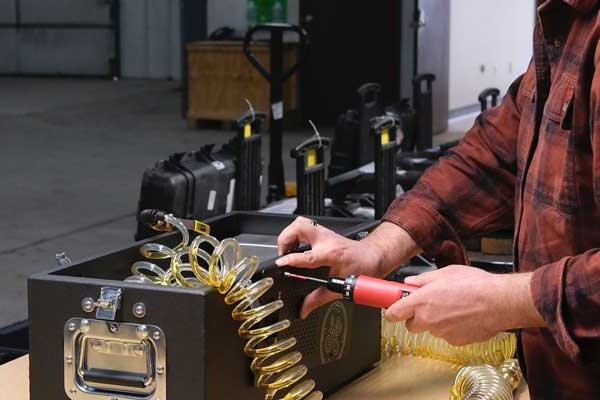
請負組立を利用する業界とは?
受託組立は多くの産業を支えています。信頼性の高い効率的な生産を必要とする企業であれば、どのような企業でも組立作業のアウトソーシングから利益を得ることができます。
エレクトロニクス
エレクトロニクス企業は、回路基板、ワイヤーハーネス、コンシューマー機器などの受託組立をよく利用する。熟練した技術者は、接続が正確で、ユニット間で性能が一貫していることを保証します。
自動車
自動車業界では、サブアッセンブリー、ダッシュボード、配線システム、小型機械部品などの組み立てを請け負っている。アウトソーシングは、厳格な品質基準を維持しながら、大量生産に対応するのに役立ちます。
医療機器
医療機器メーカーは、診断ツール、器具、ウェアラブルデバイスの組み立てを請け負っている。高精度と規制遵守が不可欠であり、そのプロセスには経験豊富なプロバイダーが欠かせません。
商業設備
産業機器メーカーや商業機器メーカーは、機械の組み立てを請け負っている、 交通安全用品 HVACシステム、特殊工具など。プロバイダーは、生産を合理化し、リードタイムを短縮することで、機器が予定通りに顧客に届くように支援します。
適切な組み立て請負パートナーの選択
適切なパートナーを選ぶことは非常に重要です。強力なプロバイダーは、品質、スピード、スムーズなコラボレーションを保証します。
能力と専門知識の評価
プロバイダーのスキルと経験をチェックすることから始めましょう。彼らが組み立ててきた製品の種類や、過去のプロジェクトの複雑さを確認してください。労働力、設備、ワークフローについても尋ねてください。有能なパートナーは、さまざまな材料、技術、生産量を管理しているはずです。
認証と規格のチェック
認証は、プロバイダーが認知された品質と安全性の慣行に従っていることを示す。品質管理にはISO9001が一般的で、医療機器にはISO13485が適用される。業種によっては、電子機器用のRoHSや航空宇宙部品用のAS9100など、他の規格が必要になる場合もあります。
立地と物流を考慮する
プロバイダーの所在地は、コスト、納期、コミュニケーションに影響する。現地のパートナーは輸送費を削減し、納品を早めるかもしれない。海外のパートナーであれば、人件費の削減や独自の専門知識を提供できるかもしれない。ロジスティクス、配送オプション、税関の遅延などのリスクを考慮する。
結論
受託組立により、企業は部品や製品の組立を熟練した業者に委託することができる。時間を節約し、コストを削減し、専門知識を利用することができる。企業は生産規模を拡大し、効率を向上させ、品質を維持しながら製品をより早く市場に投入することができる。
生産を合理化する準備はできていますか? お客様のプロジェクトについてお聞かせください。.一緒に製品を作りましょう。
よくあるご質問
製品設計が受託組立に適していることを確認するには?
設計プロセスの早い段階で、潜在的な組立パートナーに相談しましょう。DFM(製造可能性設計)分析を提供し、潜在的な製造上の問題を特定し、より簡単でコスト効率の高い組み立てのための修正を提案し、設計がそのプロセスに最適化されていることを確認することができます。
典型的な契約とはどのようなものですか?
この関係は、業務範囲、品質基準、価格設定、支払条件、責任、知的財産の所有権、守秘義務(NDA)、解約条項の概要を記した詳細な契約書によって管理される。このような契約は、法律顧問にレビューしてもらうことが極めて重要である。
私の会社が供給した部品に欠陥があった場合、誰が責任を負うのですか?
顧客がすべての部品を供給するキッティング・アセンブリー・モデルでは、顧客は通常、欠陥のない部品に責任を持つ。組立業者は、不具合を報告し、製品を正しく組み立てる責任がある。責任の所在は、サービス契約書に定義されています。
組み立て請負業者は、梱包や出荷を手伝ってくれますか?
そう、多くの受託組立業者は、カスタムパッケージング、ブランディング、キッティング、ロジスティクス管理、流通業者への出荷または最終顧客への直接出荷などの付加価値サービスを提供し、完全なエンド・ツー・エンドのソリューションを提供している。

ケビン・リー
レーザー切断、曲げ加工、溶接、表面処理技術を専門とし、板金加工において10年以上の実務経験があります。シェンゲンのテクニカルディレクターとして、複雑な製造上の課題を解決し、各プロジェクトにおける革新と品質の向上に尽力しています。

